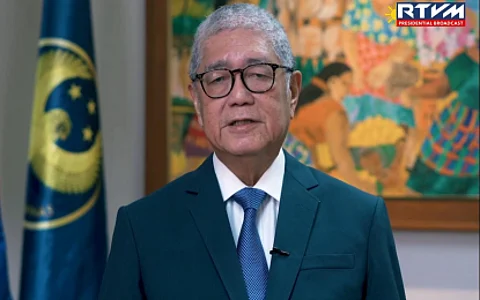
- NEWS
- the EDIT
- COMMENTARY
- BUSINESS
- LIFE
- SHOW
- ACTION
- GLOBAL GOALS
- SNAPS
- DYARYO TIRADA
- MORE

To help drive economic growth, the Bangko Sentral ng Pilipinas (BSP) has decided to reduce the reserve requirement ratio (RRR) for universal and commercial banks to 5 percent from 7 percent.
Non-bank financial institutions and quasi-banks (NBQBs) will also have a lower RRR of 5 percent.
The BSP also relaxed the RRRs of digital banks to 2.5 percent and thrift banks to 0 percent.
A lower RRR enables banks to lend more of their funds to clients in a cost-efficient manner.
The new RRRs will take effect starting 8 March 2025 and will apply to local currency deposits and deposit substitute liabilities of banks and NBQBs.
“The BSP reiterates its long-run goal of enabling banks to channel their funds more effectively toward productive loans and investments. Reducing RRRs will lessen frictions that hinder financial intermediation,” BSP said in a statement on Friday.
The lower RRRs were announced after the country’s economic growth slowed to 5.6 percent last year from 5.5 percent in 2023, according to the Philippine Statistics Authority.
The 2024 level was also below the government target range of 6 percent to 6.5 percent.
Economists attributed the decline partly to weaker household consumption at 4.7 percent in the last quarter from 5.2 percent in the third quarter of 2024, despite the Christmas celebrations.
Rizal Commercial Banking Corporation chief economist Michael Ricafort said a lower RRR could provide borrowers additional loans amounting to P330 billion.
BSP Governor and Monetary Board Chairman Eli Remolona Jr. said the lower RRRs will also support low inflation rates through controlled household consumption.
The BSP this month kept its benchmark for interest rates steady at 5.75 percent after inflation remained elevated at 2.9 percent in January, according to the national statistician. The BSP aims to decelerate it to 2 percent.
Remolona said the BSP will be taking a “measured” approach in cutting its policy rate as geopolitical tensions and high tariffs on US imports under the Trump administration could raise global inflation.
“I think we need a little bit of time to recalibrate our models because we’re facing an unusual phenomenon in terms of uncertainties of policies,” he said.
Remolona said 6 percent economic growth is still possible as the BSP expects average inflation this year to fall within its target band of 2 to 4 percent due to easing rice prices.
He said the average inflation this year might inch up to 3.5 percent from the 3.4 percent the BSP Monetary Board estimated in December. For 2026, it maintained the inflation outlook at 3.7 percent.
Previously in September last year, the BSP announced an RRR cut for universal and commercial banks by 250 basis points (bps) from 9.5 percent.
